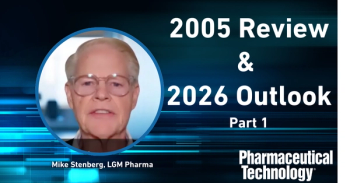
- Pharmaceutical Technology-08-02-2009
- Volume 33
- Issue 8
Bio Burdens
An ounce of contamination usually leads to a mountain of investigation.
Diluted label copy
"We were conducting an incoming AQL [acceptable quality level] inspection on contract-made products for which we supplied the labels," says our GMP Agent-in-Place. "By chance, our sample contained a box of product where the diluent label was a photocopy rather than a printed label that we supplied.
"Evidently, the contract company ran out of the diluent labels because of packaging-line problems and chose to photocopy labels rather than request more. Of course, we did a 100% inspection of all the labels after that. After a year, management decided we could trust them to print their own labels, and we've had no repeat of the issue."
Measured does not mean controlled
"Although our biological protein products undergo lengthy purification steps," explains our GMP Agent-in-Place, "in the initial stainless-steel vessel, the bioburden bounced in and out of our internal limits. Because it had always come back into limits, and we had good downstream bioburden results, we never reacted to the excursions.
"FDA saw otherwise and cited us on the excursions. The dedicated vessel was cleaned between each use, but our analysis showed that simple CIP [clean in place] wasn't enough, and that there was a biofilm buildup in some areas. One indication of this was that the bioburden count was higher when starting up after area shutdowns. We implemented a routine hot sodium hydroxide soak to remove the biofilm, which worked well in controlling the bioburden."
Clean by design
"I was investigating a deviation for CIP contamination of a batch of product," says our GMP Agent-in-Place. "The automated production system had failed, and the engineers and production scientists were going over the records and plumbing with a fine-toothed comb.
"The CIP does not start automatically but is initiated by the operator. For this batch, the CIP of tank 1 was started when there was still product in tank 2. This shouldn't be a problem, but there is some common piping between the two tanks. So a simultaneous opening of a valve on tank 2 occurred with the pumping in of CIP solution into tank 1. CIP solution was also pumped into tank 2, thereby contaminating the product. The correction for the batch was easy: reject and destroy. The corrective action for the automated system took much longer."
How to make bacteria paste
"Our product was manufactured from animal parts, and the first steps were performed in an open environment with no environmental controls," says our GMP Agent-in-Place. "The final formulation steps were performed in a Class C area, followed by sterile filtration and filling. Samples of the nonsterile bulk would be taken and delivered to the microbiology laboratory for testing. (This was more than 20 years ago, when we had no limits on bioburden counts.)"
"The FDA inspector reviewed our bioburden data and noted that the counts were excessive, especially one that was 106 /mL. He asked whether the sterilizing filter was validated for this level of bacterial removal. Further investigation showed that this particular sample was collected on a Friday afternoon, and was stored on the production supervisor's desk until the laboratory opened on Monday, when it was taken in for testing. This 60+ hours of unintentional incubation at room temperature undoubtedly led to proliferation. So the inspector had two observations: high bioburden and inappropriate sample handling. Sigh."
Pharmaceutical Technology's monthly "Agent-in-Place" column distills true-life cautionary tales from the secret files of Control, a senior compliance officer. If you have a story of clueless operators, oblivious management, inopportune lapses of judgment, or Murphy's Law in action, please send it to Control at
Articles in this issue
over 16 years ago
Shifting Fortunes in API Market Growthover 16 years ago
Inside PIC/S: South Africa's Accession to PIC/Sover 16 years ago
Step Carefully into Foreign Affairsover 16 years ago
In the Spotlight August 2009over 16 years ago
Pharma Capsulesover 16 years ago
For Biotherapeutics, Innovation is Not Enoughover 16 years ago
Pharma-Biotech Partnerships: Lessons for Personalized Medicineover 16 years ago
Colder Drugs Will PrevailNewsletter
Get the essential updates shaping the future of pharma manufacturing and compliance—subscribe today to Pharmaceutical Technology and never miss a breakthrough.




